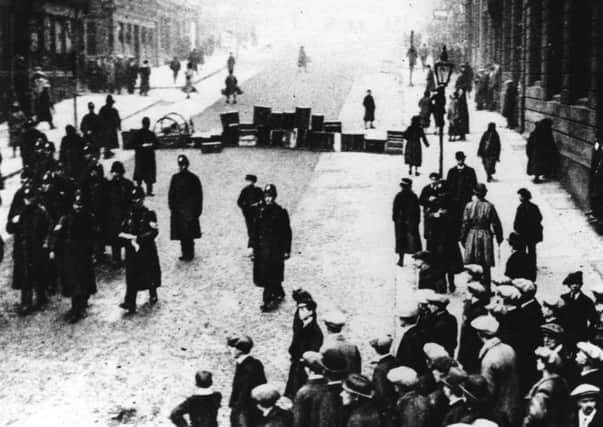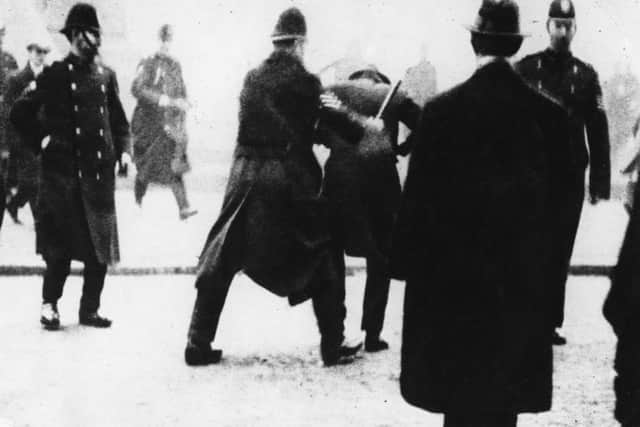‘Red Clydeside’ Battle of George Square remembered with centenary gathering


Police and striking workers clashed on 31 January 1919 in a violent confrontation also known as Bloody Friday or Black Friday.
Tens of thousands of demonstrators gathered in George Square after the end of the First World War as the city’s sprawling industrial community demanded a 40-hour week compared to their 57-hour contracts.
Advertisement
Hide AdAdvertisement
Hide AdPolice baton charged the crowd while several union leaders were arrested, as officials even resorted to reading the Riot Act during the clashes, which spread out across the city centre.


Amid fears the unrest could lead to a socialist uprising in the wake of the revolution in Russia only a year previously, the government sent more than 10,000 troops and tanks north to restore order.
Although the unsuccessful strike ended in February, with its leaders arrested, it provided inspiration for future generations in the labour movement.
A century on from the mass gathering – estimates of the crowd size vary from 20,000 to as many as 60,000 – a series of speeches and performances was organised yesterday by the Open University in Scotland.
The open learning event, which was designed to inform people about the events leading up to the protests, as well as some of the myths that have sprung up around it, drew an appreciative crowd, with students mingling alongside workers on their lunch break.
Those who gave addresses included the city’s Lord Provost Eva Bolander, David McDonald, the depute leader of Glasgow City Council, Lyn-Marie O’Hara, a UNISON shop steward, Jennifer McCarey, chair of Glasgow Trades Council, and academics from the Open University. Musician Jonzip McNeil performed a song he wrote about the events of 100 years ago.
The small gathering began with a speech by Dr Gerry Mooney, a senior lecturer in social policy and criminology at the university.
He described the events of 100 years ago as “one of the most volatile and violent protests in the city’s history”, but stressed the importance of filtering out the fiction from reality.
Advertisement
Hide AdAdvertisement
Hide Ad“We need to get the history right, so we understand how it affects the present and even the future,” he explained.
Ms O’Hara pointed out that the location of the strike cemented George Square’s reputation as a place for protest in the city.
She said: “We can gather here now without fear of violence. This is our square.”
Ms Bolander, who delivered a closing speech, announced that a new plaque would be installed to mark what happened in 1919 and said she hoped the event would encourage more people to take a closter interest in Glasgow’s rich social history.
Yesterday’s speeches are among a number of events taking place across the city to mark the centenary.
Kenny MacAskill, the former justice secretary and Scotsman columnist, held a book signing last night in the Sauchiehall Street branch of Waterstones to coincide with the launch of Glasgow 1919: The Rise of Red Clydeside.
A free walking tour taking place tomorrow will show people around the key sites linked to the unrest in the city at the time.
The event, which will begin in George Square at noon, is being organised by a group of historians and researchers in the city.